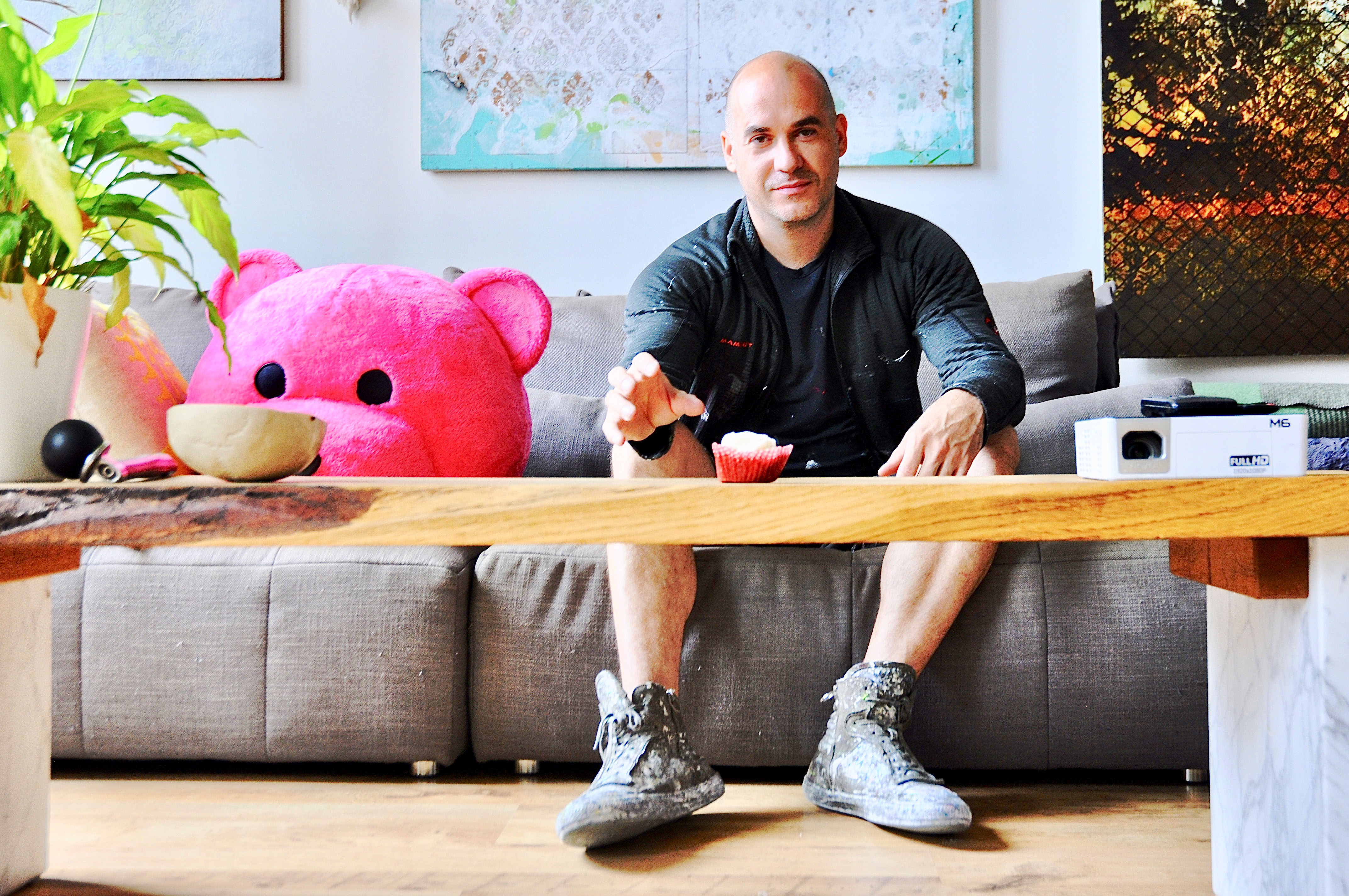Paul Robinson (LUAP)
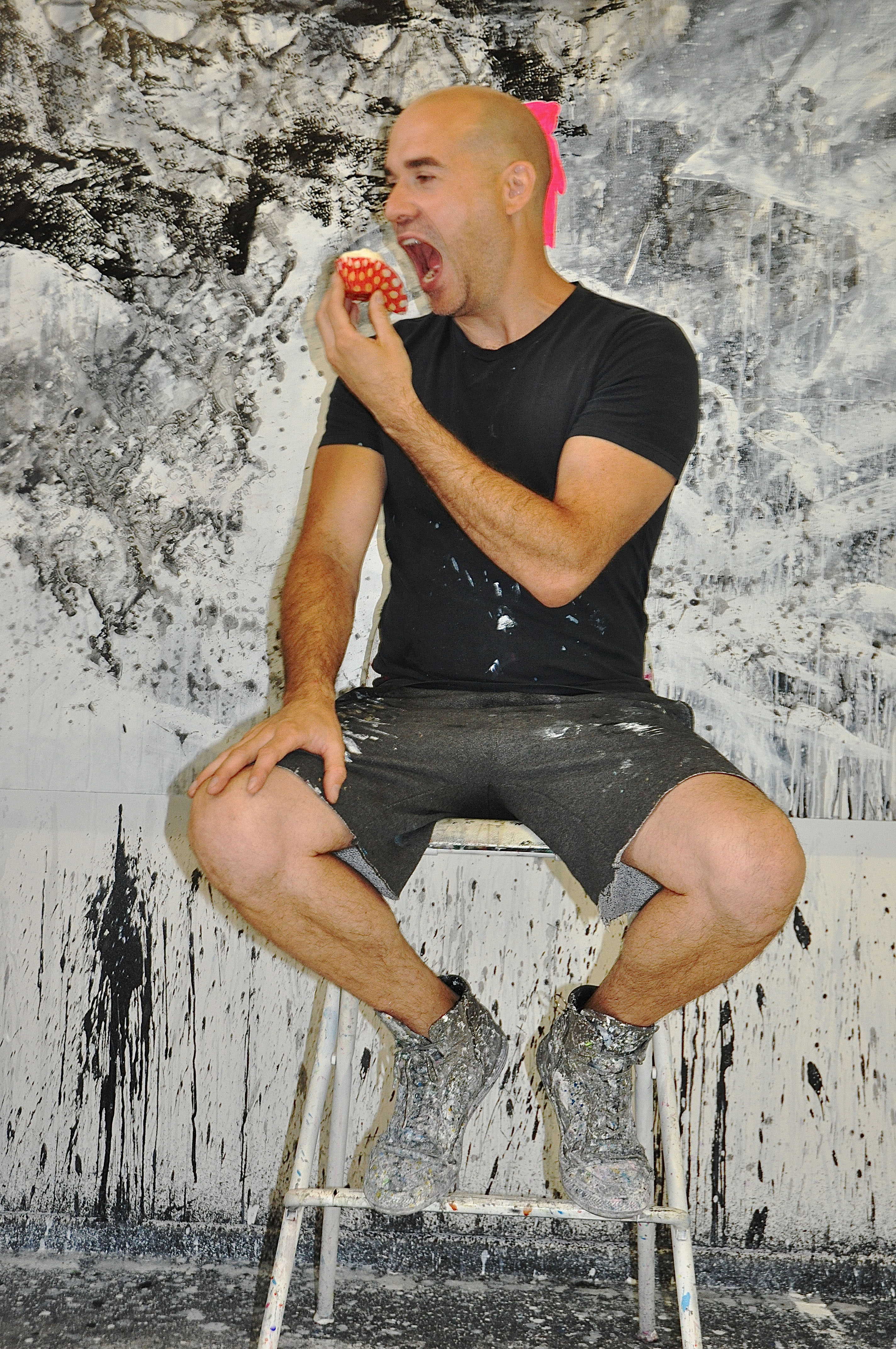
There is something wonderful about children playing, from the sound of their laughter and squeals and interactions, to the inventiveness they display, striking a relationship with imagination and reality in a world of pretend. Climbing trees exploring abandoned places. We all are familiar with being children, from our own experiences to being a parent. This imaginary world is encapsulated by Paul’s most recent works of The Pink Bear in a realistic and fictional environment lost or wandering, sometimes taking us into a more political storyline of the world as it is today.
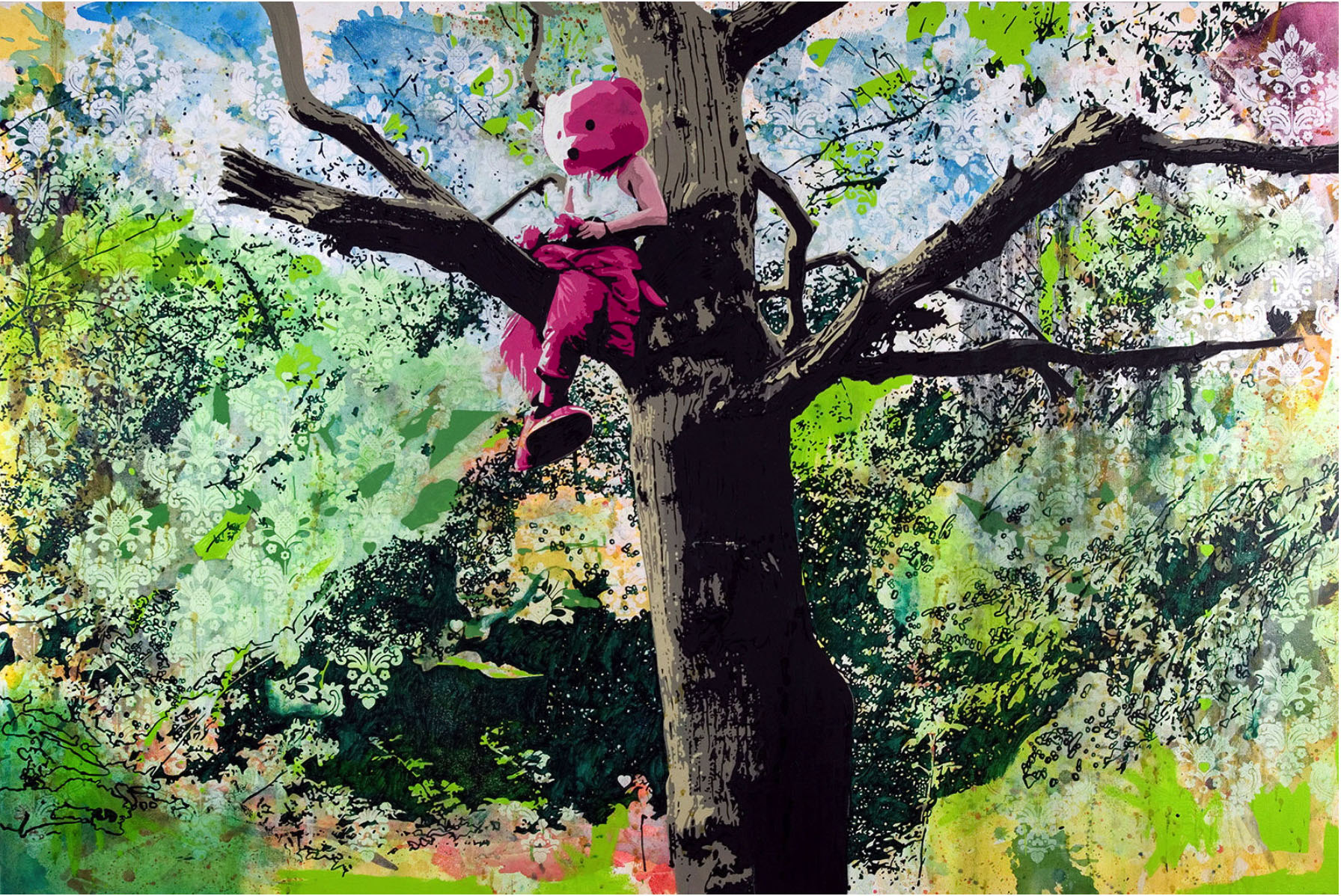
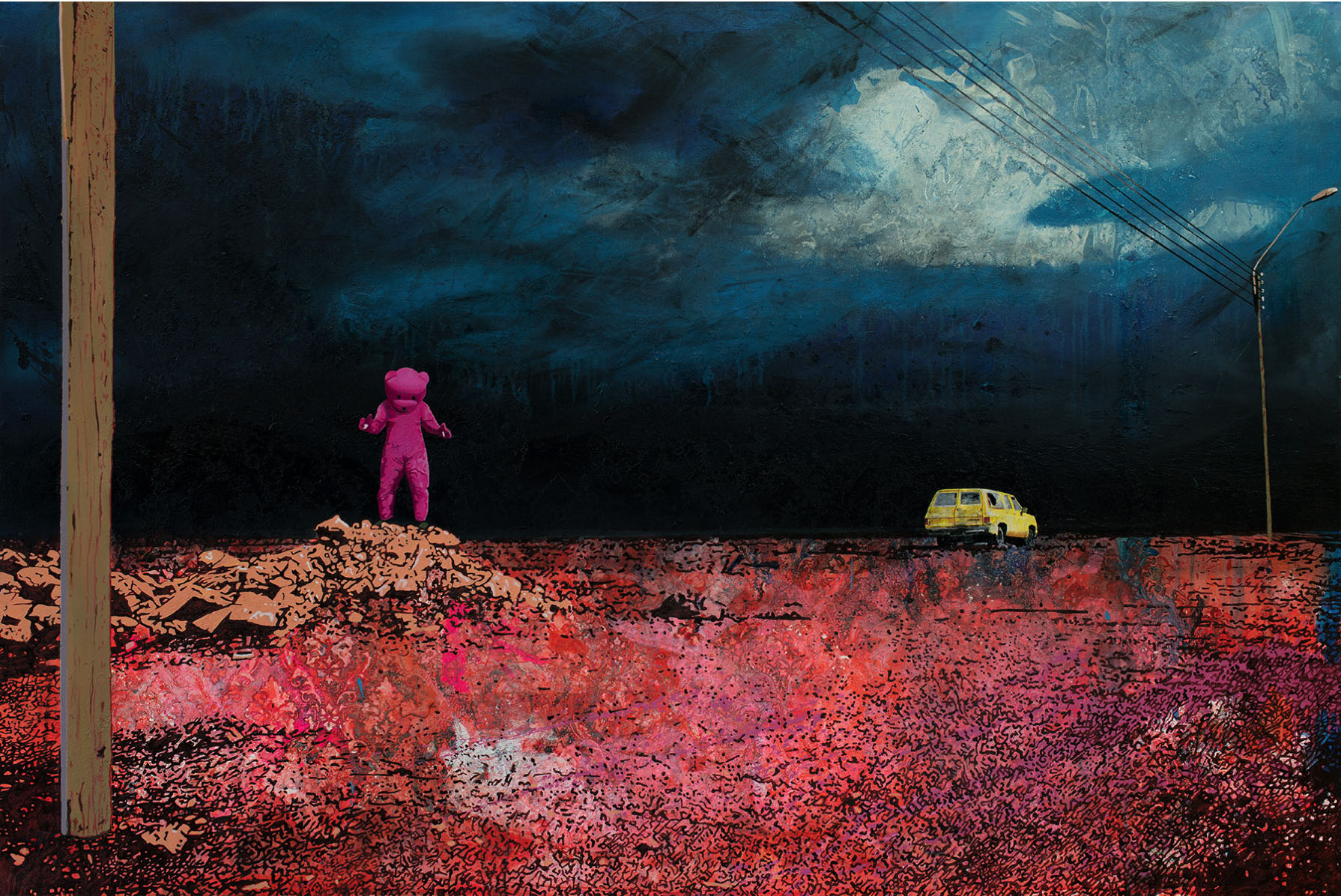
Paul narrates the adult topics of climate change, the exploitation of our environment as well as our current affairs, through the eyes of innocence. These artworks come in themes, I used to be a Polar Bear, representing the idea that the Polar Bear may become a mythical creature in our future, where nobody will know whether they existed or not, as well as Pink Bear, BedTime Stories and Pink Bear Is Coming To Town. It is renascence of childhood, loss of innocence and those lost moments of happiness that we all encounter within the realms of family. His bear is inspired by an old photograph, of just that, family life with his mother, father and brother, as they meet a Care Bear in the 1980’s. The patterns that Paul uses in his paintings, is the metaphysical layering of wallpaper that his mother painted over many times in the home where he grew up. His love of trees; as his father chopped down the apple tree to make room for a swing, when he preferred the real tree. The good intentions of parenting and the true effect it has on our innocence.
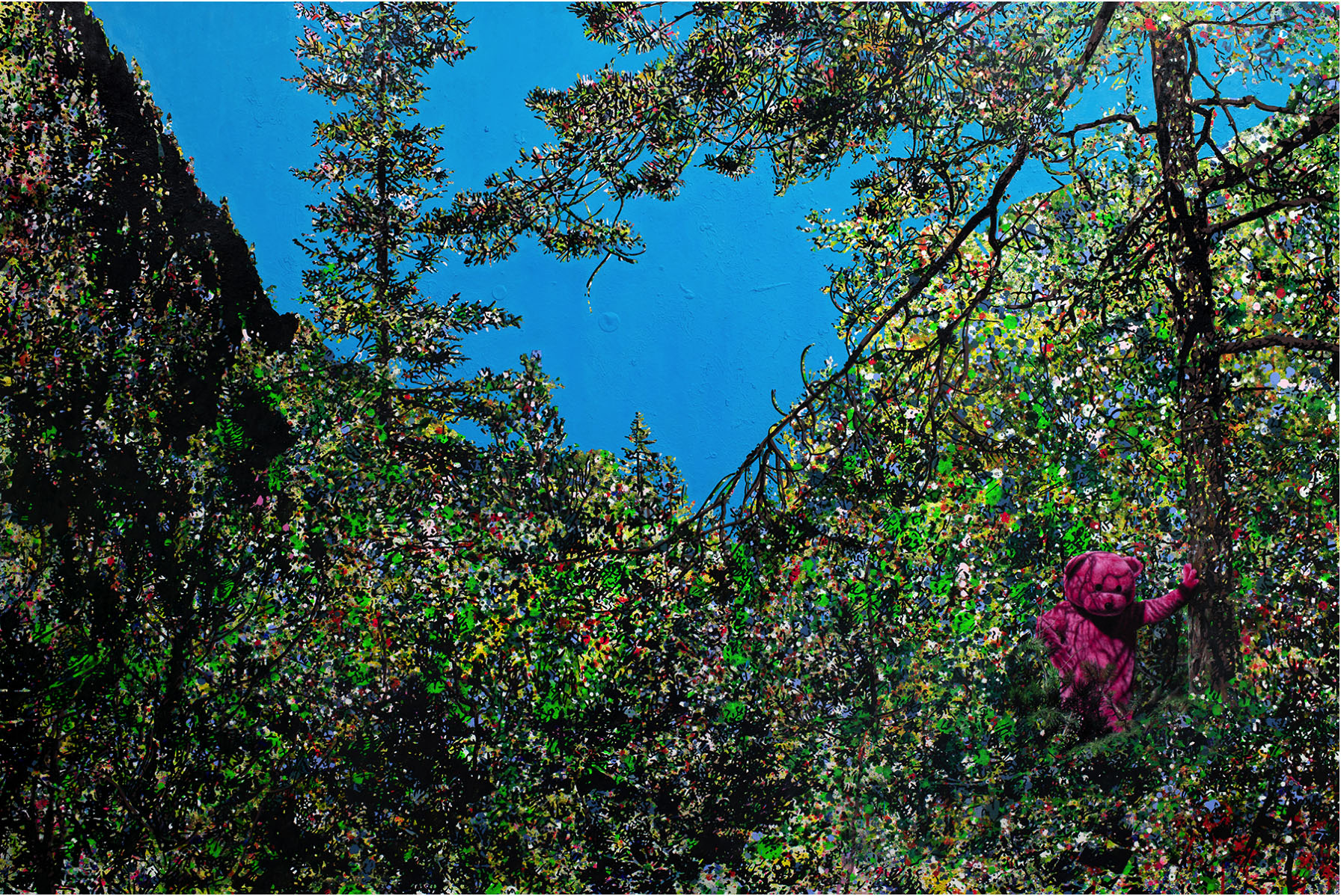
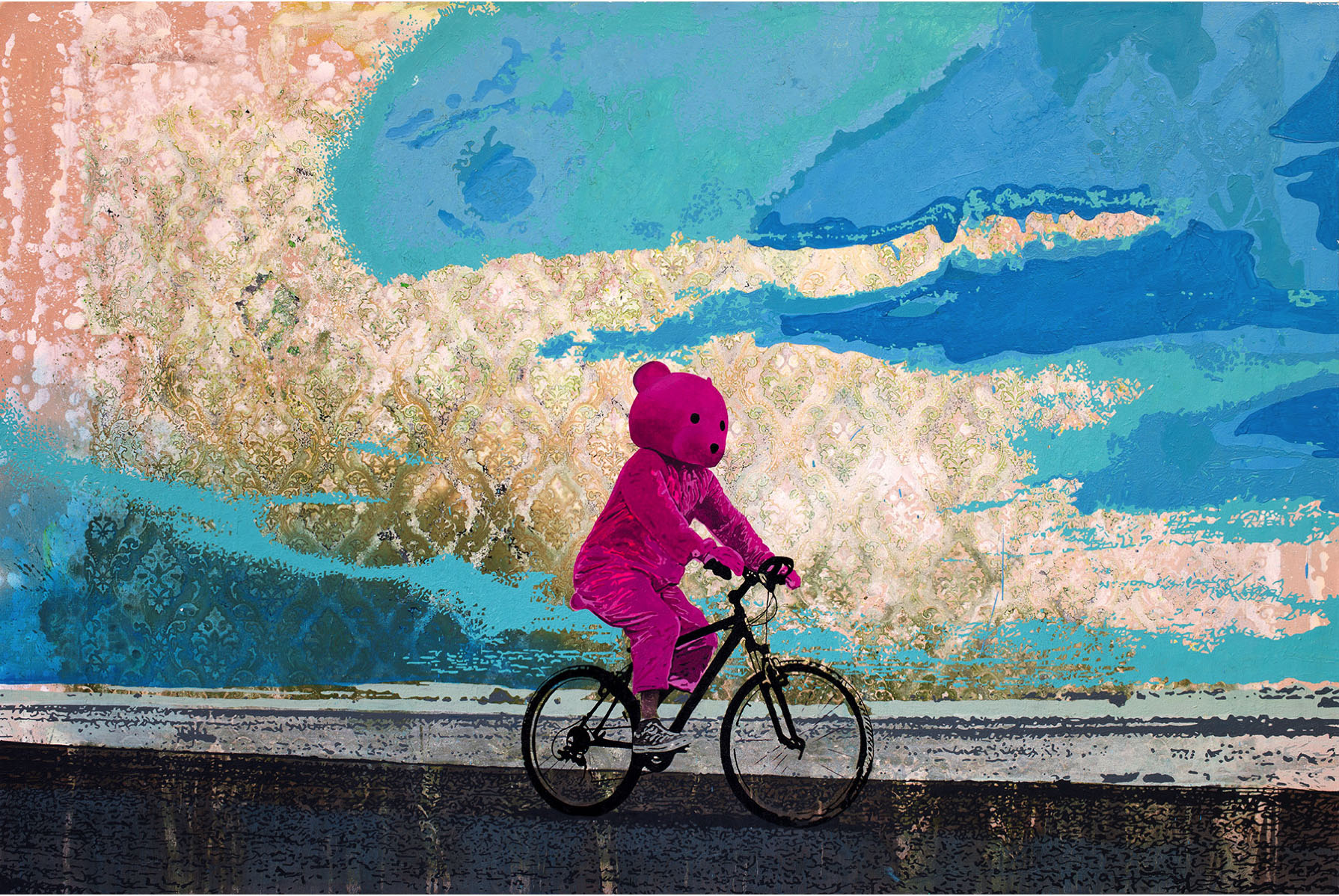
When you meet Paul, a tall man with a strong athletic build, one can easily forget the gentle soul that resides. A highly successful driven student, he accomplished A levels in Art, Design and Technology as well as Maths and Physics. He bought his own dark room at 16 with money he earned, then studied A level Photography, and completed a foundation course before applying to Goldsmiths. He didn’t get in, he tells me, grinning. After studying Fine art at Canterbury, Goldsmith approached him to talk about his Pink Bear artwork. Oh the irony!
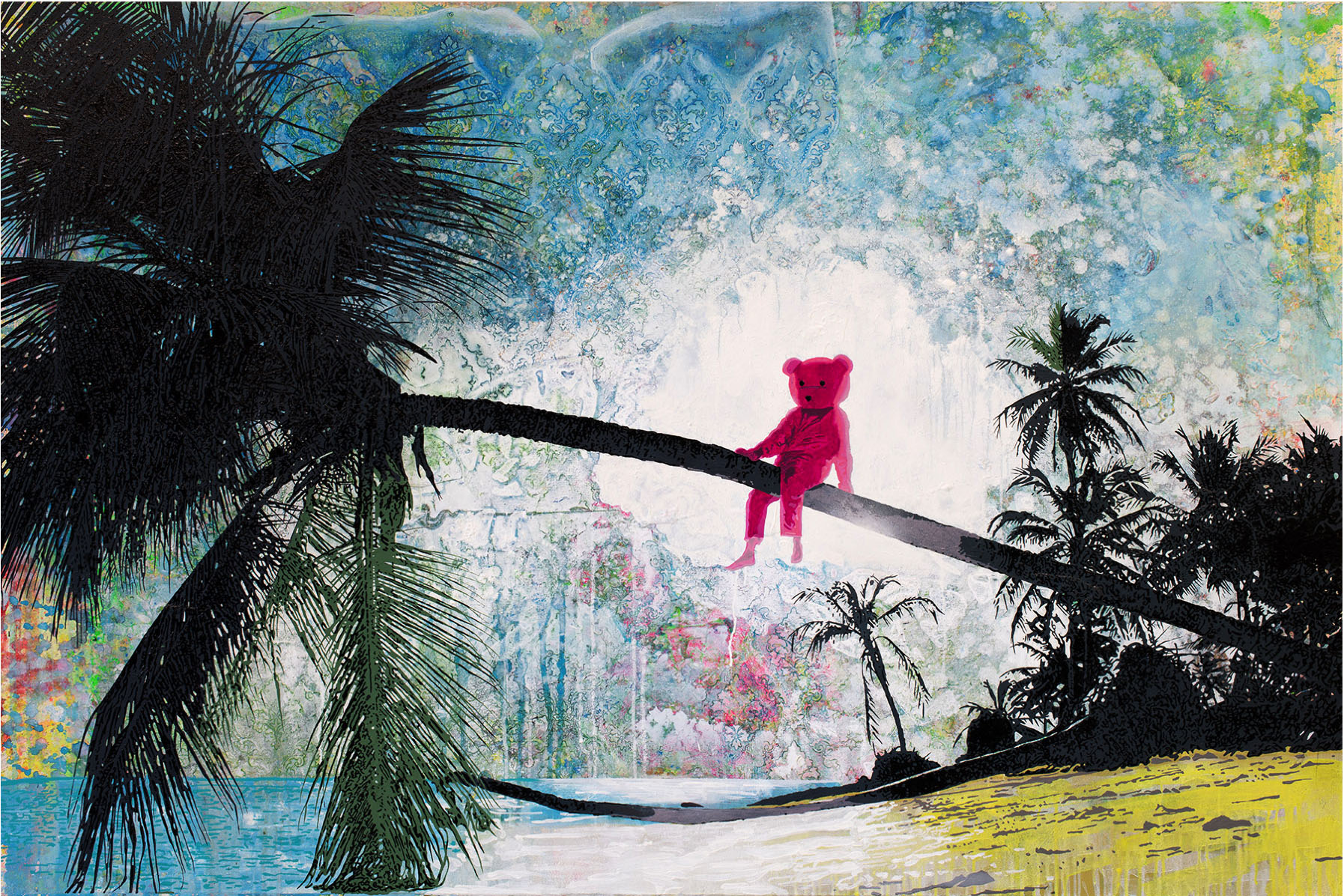
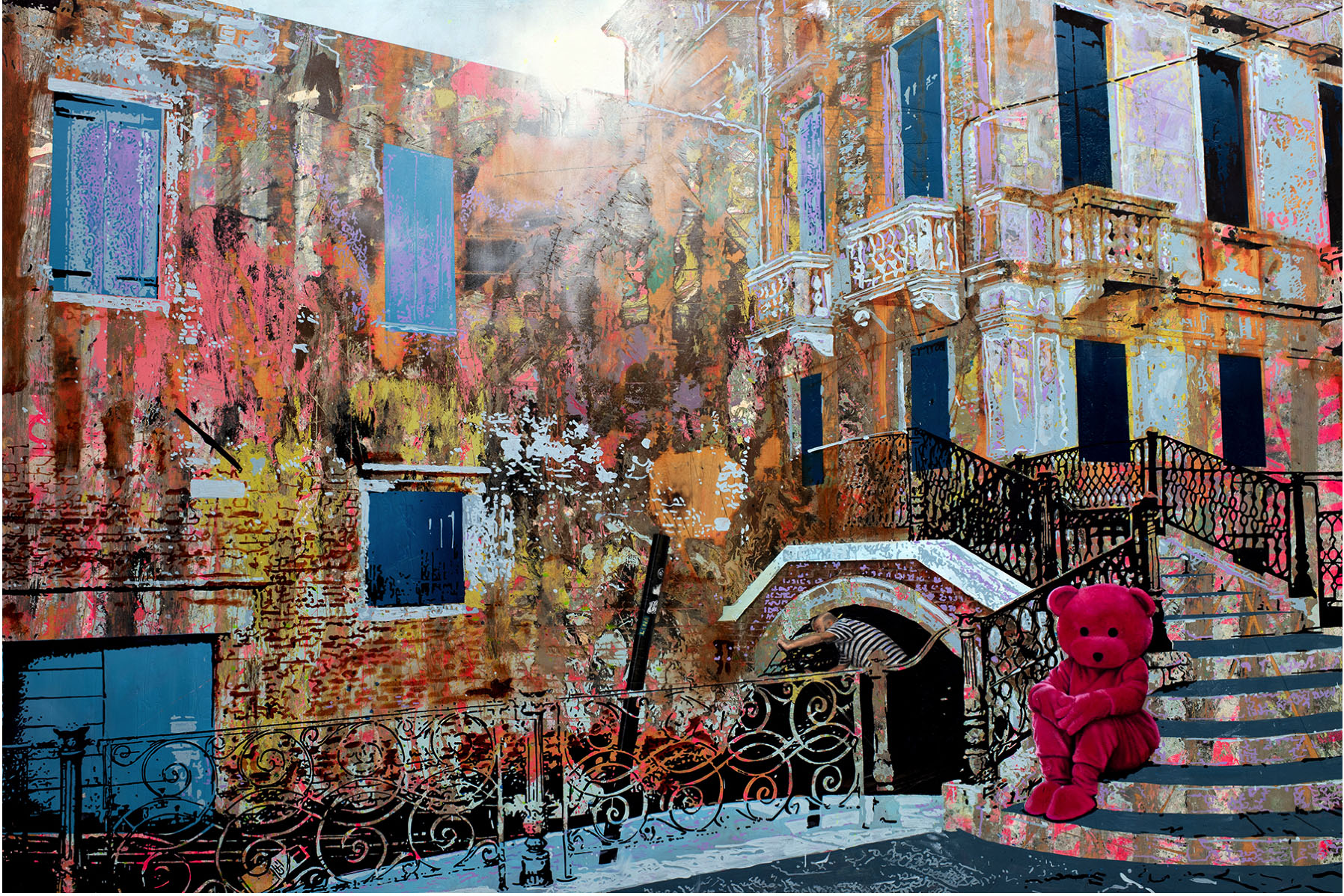
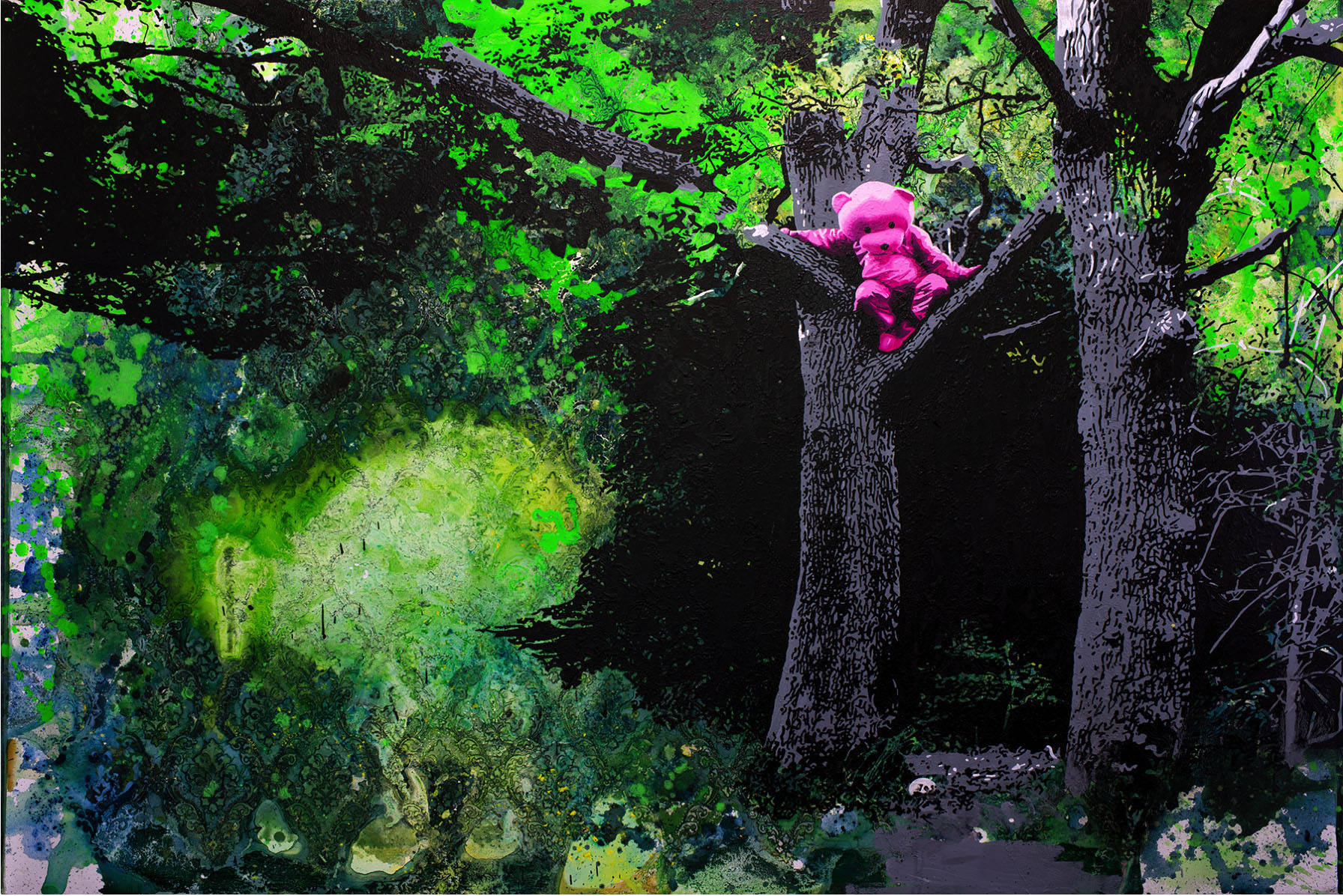
If you are thinking to yourself that he was privileged; he grew up in Grimsby, made famous by channel 4’s benefit street. Paul was an academic scholar though, always top of the class, as well as being an accomplished athlete. p. His determination did not deter him even after his parents split when he was 16, he was already showing his artwork by then “They supported me with anything I wanted to do.” Choosing Art because it gave him the freedom to explore. His father is also an artist, a sculptor, however he spent most of his life working on the oil rigs in the North Sea to support his family, and now he is retired he does what he loves.
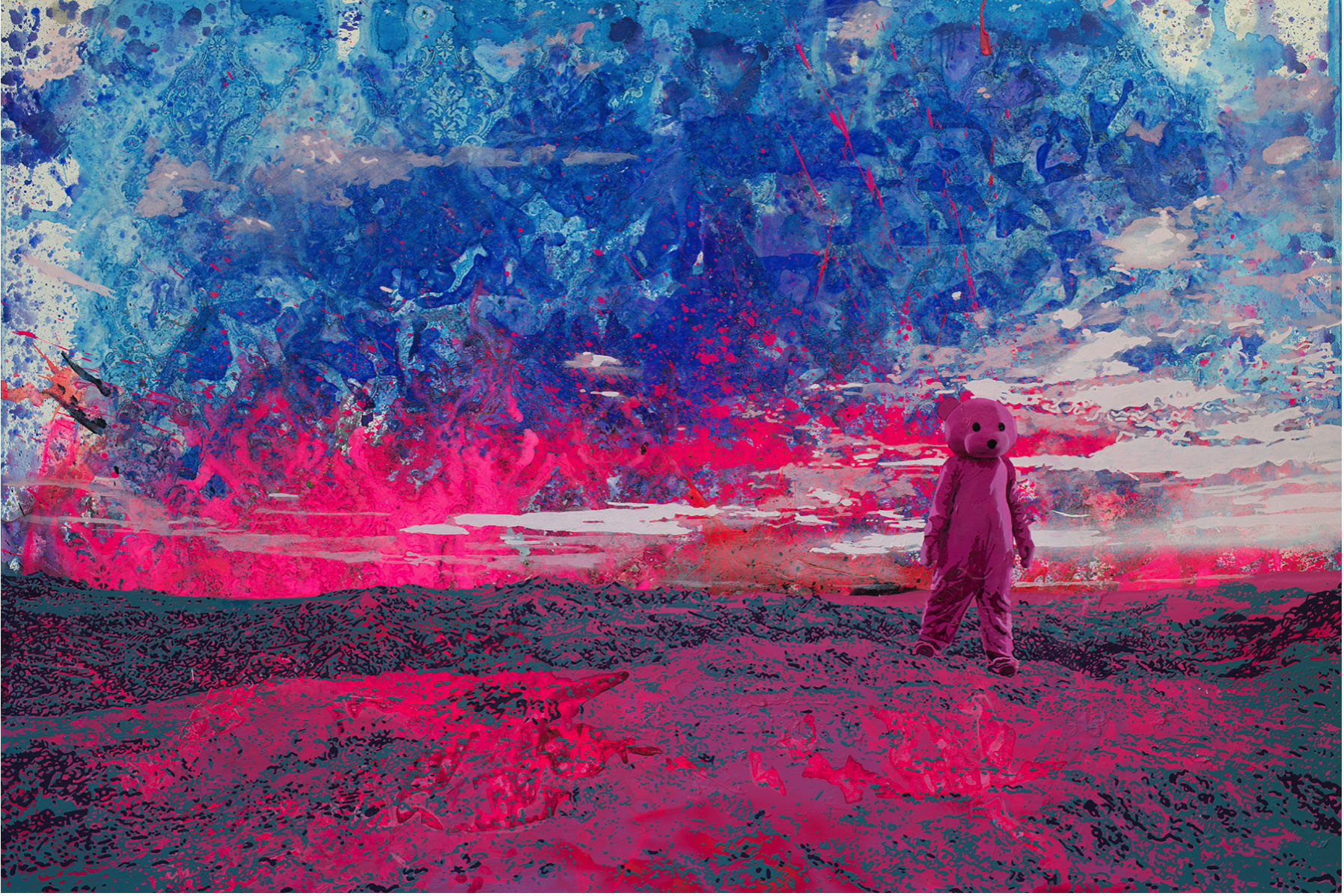
After Uni in 2005, Paul moved to London. So he could pay the bills, he worked as a Creative Director for prestigious advertising agencies and charities. He is very cautious, treading a careful line, he doesn’t want to have nothing. We touch on the subject that some successful artists have the advantage of having wealthy parents to allow them the freedom to be artists. Business acumen is what has become a necessary part of many modern artists today.
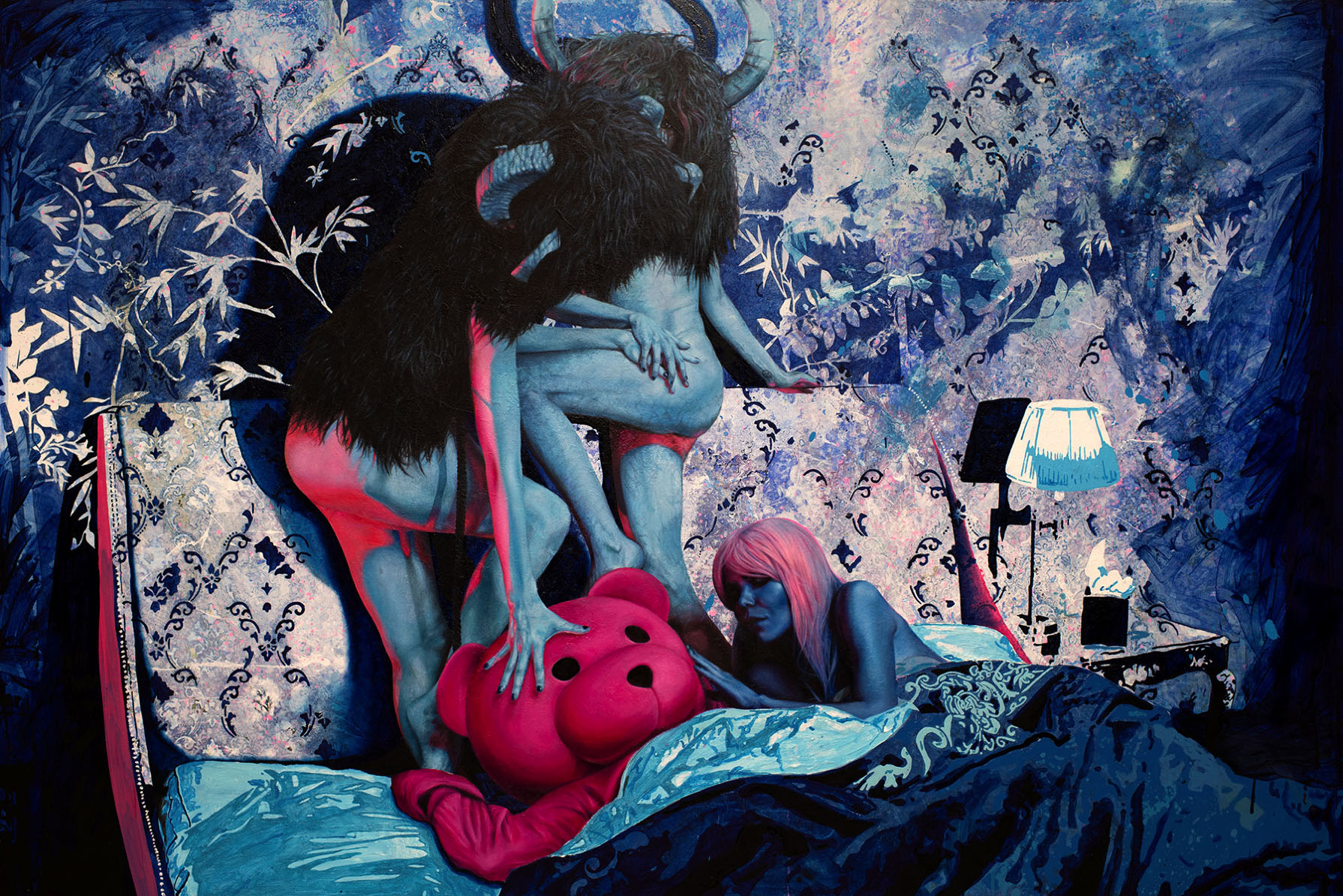
His artworks do create debate and are subjective, he was recently challenged by a woman at one of his shows at the art fair, who appeared a bit aggressive, as he tried to explain the artworks are about human trafficking. This conversation between humans through artistic mediums is so essential to our lives. Paul’s painting decorates a wall in the exclusive Belgrave Hotel, alongside legendary artists Andy Warhol, Banksy, Damien Hirst, Joan Miro, and Mark Chagall. His work has appeared in 35 shows from every corner of London from Mayfair to Spitalfields, and around the globe from Dubai to Hong Kong. He is currently working on his next show, large canvases that he meticulously layers that leave you too gaze for a long time. I heard a quote recently by a famous collector who said “You Gaze at art, gazing is much nobler than just looking”
Interview: Antoinette Haselhorst
